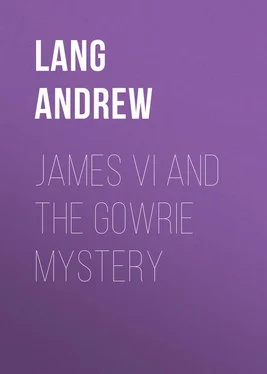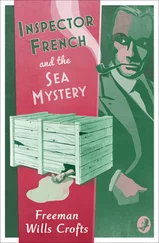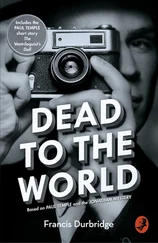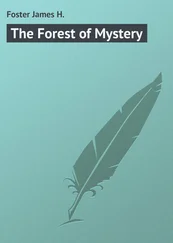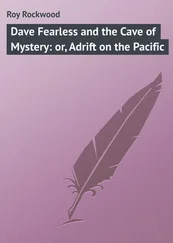Andrew Lang - James VI and the Gowrie Mystery
Здесь есть возможность читать онлайн «Andrew Lang - James VI and the Gowrie Mystery» — ознакомительный отрывок электронной книги совершенно бесплатно, а после прочтения отрывка купить полную версию. В некоторых случаях можно слушать аудио, скачать через торрент в формате fb2 и присутствует краткое содержание. Жанр: foreign_antique, foreign_prose, на английском языке. Описание произведения, (предисловие) а так же отзывы посетителей доступны на портале библиотеки ЛибКат.
- Название:James VI and the Gowrie Mystery
- Автор:
- Жанр:
- Год:неизвестен
- ISBN:нет данных
- Рейтинг книги:5 / 5. Голосов: 1
-
Избранное:Добавить в избранное
- Отзывы:
-
Ваша оценка:
- 100
- 1
- 2
- 3
- 4
- 5
James VI and the Gowrie Mystery: краткое содержание, описание и аннотация
Предлагаем к чтению аннотацию, описание, краткое содержание или предисловие (зависит от того, что написал сам автор книги «James VI and the Gowrie Mystery»). Если вы не нашли необходимую информацию о книге — напишите в комментариях, мы постараемся отыскать её.
James VI and the Gowrie Mystery — читать онлайн ознакомительный отрывок
Ниже представлен текст книги, разбитый по страницам. Система сохранения места последней прочитанной страницы, позволяет с удобством читать онлайн бесплатно книгу «James VI and the Gowrie Mystery», без необходимости каждый раз заново искать на чём Вы остановились. Поставьте закладку, и сможете в любой момент перейти на страницу, на которой закончили чтение.
Интервал:
Закладка:
Andrew Lang
James VI and the Gowrie Mystery
An old Scottish lady, four generations ago, used to say, ‘It is a great comfort to think that, at the Day of Judgment, we shall know the whole truth about the Gowrie Conspiracy at last.’ Since the author, as a child, read ‘The Tales of a Grandfather,’ and shared King Jamie’s disappointment when there was no pot of gold, but an armed man, in the turret, he had supposed that we do know all about the Gowrie Conspiracy, that it was a plot to capture the King, carry him to Fastcastle, and ‘see how the country would take it,’ as in the case of the Gunpowder Plot. But just as Father Gerard has tried to show that the Gunpowder affair may have been Cecil’s plot, so modern historians doubt whether the Gowrie mystery was not a conspiracy by King James himself. Mr. Hume Brown appears rather to lean to this opinion, in the second volume of his ‘History of Scotland,’ and Dr. Masson, in his valuable edition of the ‘Register of the Privy Council,’ is also dubious. Mr. Louis Barbé, in his ‘Tragedy of Gowrie House,’ holds a brief against the King. Thus I have been tempted to study this ‘auld misterie’ afresh, and have convinced myself that such historians as Sir Walter Scott, Mr. Frazer Tytler, and Mr. Hill Burton were not wrong; the plot was not the King’s conspiracy, but the desperate venture of two very young men. The precise object remains obscure in detail, but the purpose was probably to see how a deeply discontented Kirk and country ‘would take it.’
In working at this fascinatingly mysterious puzzle, I have made use of manuscript materials hitherto uncited. The most curious of these, the examinations and documents of the ‘country writer,’ Sprot, had been briefly summarised in Sir William Fraser’s ‘Memorials of the Earls of Haddington.’ My attention was drawn to this source by the Rev. John Anderson, of the General Register House, who aided Sir William Fraser in the compilation of his book. The Earl of Haddington generously permitted me to have copies made of the documents, which Lady Cecily Baillie-Hamilton was kind enough to search for and rediscover in an enormous mass of documents bequeathed by the learned first Earl.
On reading the Calendars of the Hatfield MSS. I had observed that several letters by the possible conspirator, Logan of Restalrig, were in the possession of the Marquis of Salisbury, who was good enough to permit photographs of some specimens to be taken. These were compared, by Mr. Anderson, with the alleged plot-letters of Logan at Edinburgh; while photographs of the plot-letters were compared with Logan’s authentic letters at Hatfield, by Mr. Gunton, to whose acuteness and energy I owe the greatest gratitude. The results of the comparison settle the riddle of three centuries.
The other hitherto unused manuscripts are in no more recondite place than the Record Office in London, and I do not know how they managed to escape the notice of previous writers on the subject. To Dr. Masson’s ‘Register of the Privy Council’ I am indebted for the sequel of the curious adventure of Mr. Robert Oliphant, whose part in the mystery, hitherto overlooked, is decisive, if we accept the evidence – a point on which the reader must form his own opinion. For copies made at the Record Office I have to thank the care and accuracy of Miss E. M. Thompson.
To Mr. Anderson’s learning and zest in this ‘longest and sorest chase’ (as King James called his hunt on the morning of the fatal August 5) I am under the deepest obligations. The allurements of a romantic conclusion have never tempted him to leave the strait path of historical impartiality.
I have also to thank Mr. Henry Paton for his careful copies of the Haddington MSS., extracts from the Treasurer’s accounts, and other researches.
For permission to reproduce the picture of Fastcastle by the Rev. Mr. Thomson of Duddingston, I have to thank the kindness of Mrs. Blackwood-Porter. The painting, probably of about 1820, when compared with the photograph of to-day, shows the destruction wrought by wind and weather in the old fortalice.
My obligations to Sir James Balfour Paul (Lyon King of Arms) for information on points of Heraldry ought to be gratefully acknowledged.
Since this book was written, the author has had an opportunity to read an Apology for the Ruthvens by the late Andrew Bisset. This treatise is apt to escape observation: it is entitled ‘Sir Walter Scott,’ and occupies pp. 172–303 in ‘Essays on Historical Truth,’ long out of print. 1 1 Longmans, Green, & Co., 1871.
On many points Mr. Bisset agreed with Mr. Barbé in his ‘Tragedy of Gowrie House,’ and my replies to Mr. Barbé serve for his predecessor. But Mr. Bisset found no evidence that the King had formed a plot against Gowrie. By a modification of the contemporary conjecture of Sir William Bowes he suggested that a brawl between the King and the Master of Ruthven occurred in the turret, occasioned by an atrocious insult offered to the Master by the King. This hypothesis, for various reasons, does not deserve discussion. Mr. Bisset appeared to attribute the Sprot papers to the combined authorship of the King and Sir Thomas Hamilton: which our new materials disprove. A critic who, like Mr. Bisset, accused the King of poisoning Prince Henry, and many other persons, was not an unprejudiced historian.
I. THE MYSTERY AND THE EVIDENCE
There are enigmas in the annals of most peoples; riddles put by the Sphinx of the Past to the curious of the new generations. These questions do not greatly concern the scientific historian, who is busy with constitution-making, statistics, progress, degeneration, in short with human evolution. These high matters, these streams of tendency, form the staple of history, but the problems of personal character and action still interest some inquiring minds. Among these enigmas nearly the most obscure, ‘The Gowrie Conspiracy,’ is our topic.
This affair is one of the haunting mysteries of the past, one of the problems that nobody has solved. The events occurred in 1600, but the interest which they excited was so keen that belief in the guilt or innocence of the two noble brothers who perished in an August afternoon, was a party shibboleth in the Wars of the Saints against the Malignants, the strife of Cavaliers and Roundheads. The problem has ever since attracted the curious, as do the enigma of Perkin Warbeck, the true character of Richard III, the real face behind ‘The Iron Mask,’ the identity of the False Pucelle, and the innocence or guilt of Mary Stuart.
In certain respects the Gowrie mystery is necessarily less attractive than that of ‘the fairest and most pitiless Queen on earth.’ There is no woman in the story. The world, of course, when the Ruthvens died, at once acted on the maxim, cherchez la femme . The woman in the case, men said, was the beautiful Queen, Anne of Denmark, wife of James VI. That fair and frivolous dame, ‘very very woman,’ certainly did her best, by her behaviour, to encourage the belief that she was the cause of these sorrows. Even so, when the Bonny Earl Moray – the tallest and most beautiful man in Scotland – died like a lion dragged down by wolves, the people sang:
He was a brave gallant,
And he rode at the ring,
And the Bonny Earl Moray,
He might have been the King.
He was a brave gallant,
And he rode at the glove,
And the Bonny Earl Moray
He was the Queen’s love.
On one side was a beautiful Queen mated with James VI, a pedant and a clown. On the other side were, first the Bonny Earl, then the Earl of Gowrie, both young, brave, handsome, both suddenly slain by the King’s friends: none knew why. The opinion of the godly, of the Kirk, of the people, and even of politicians, leaped to the erroneous conclusion that the young men perished, like Königsmarck, because they were beautiful and beloved, and because the Queen was fair and kind, and the King was ugly, treacherous, and jealous. The rumour also ran, at least in tradition, that Gowrie ‘might have been the King,’ an idea examined in Appendix A. Here then was an explanation of the slaying of the Ruthvens on the lines dear to romance. The humorous King Jamie (who, if he was not always sensible, at least treated his flighty wife with abundance of sense) had to play the part of King Mark of Cornwall to Gowrie’s Sir Tristram. For this theory, we shall show, no evidence exists, and, in ‘looking for the woman,’ fancy found two men. The Queen was alternately said to love Gowrie, and to love his brother, the Master of Ruthven, a lad of nineteen – if she did not love both at once. It is curious that the affair did not give rise to ballads; if it did, none has reached us.
Читать дальшеИнтервал:
Закладка:
Похожие книги на «James VI and the Gowrie Mystery»
Представляем Вашему вниманию похожие книги на «James VI and the Gowrie Mystery» списком для выбора. Мы отобрали схожую по названию и смыслу литературу в надежде предоставить читателям больше вариантов отыскать новые, интересные, ещё непрочитанные произведения.
Обсуждение, отзывы о книге «James VI and the Gowrie Mystery» и просто собственные мнения читателей. Оставьте ваши комментарии, напишите, что Вы думаете о произведении, его смысле или главных героях. Укажите что конкретно понравилось, а что нет, и почему Вы так считаете.
